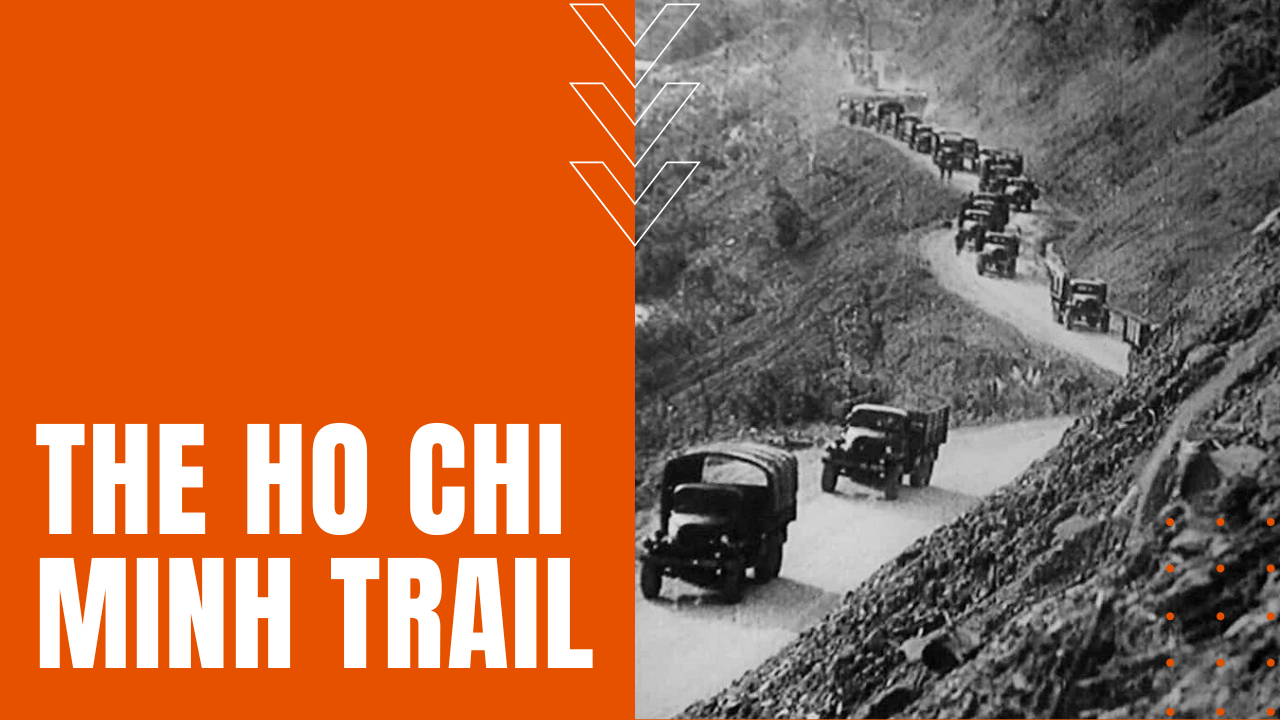Ho Chi Minh Trail

What Was The Ho Chi Minh Trail?
During the Vietnam War, The Ho Chi Minh Trail was a network of roads that ran from Communist North Vietnam to American-backed South Vietnam, transecting the kingdoms of Laos and Cambodia in a sparsely populated mountainous region of triple-canopy jungle and dense tropical rainforests.
Named La Piste de Hồ Chí Minh by French journalists during the First Indochina War, construction of a north-south road network began in July of 1959, used to supply manpower and materiel to North Vietnamese forces fighting in the South.
By mid-1960, analysts from the U.S. Defense Intelligence Agency estimated that during the Laotian dry season, North Vietnamese soldiers and volunteers alike were moving 30 trucks a day over the trail, which far exceeded the estimates of U.S. war planners in Saigon, leading to Operation Barrel Roll beginning in mid-December, 1964, which was the first systematic bombing of the Ho Chi Minh Trail by the U.S. Air Force.
Controversial Border Crossing Raids
As the American press caught wind of air attacks into a widening theater beyond Vietnam’s borders, the U.S. State Department defended the controversial raids as authorized by powers granted to President Lyndon Baines Johnson under the Gulf of Tonkin Resolution signed in August of 1964, leading to the commencement of Operation Rolling Thunder on March 20th, 1965, followed by Operation Steel Tiger.
By year’s end, the number of trail-focused bombing sorties flown by the Americans had expanded from 20 a month to over 1,000, while by 1969, records indicate that some 433,000 tons of ordnance fell on Laos alone. The ever-increasing frequency of military raids into the neutral kingdoms of Laos and Cambodia did much to escalate the Anti-war movement back home and abroad.
In the end, this encouraged LBJ not to seek a second term in office, eventually leading to the Paris Peace Accords and the Fall of Saigon in 1975, which handed victory to the Communist North. According the the U.S. National Security Agency’s official history of the Vietnam War, the Ho Chi Minh Trail was “one of the great achievements in military engineering of the 20th century,” despite the single most intensive air interdiction campaign in military history, making the Ho Chi Minh Trail, a vital asset in the North’s eventual victory in the Vietnam War.
